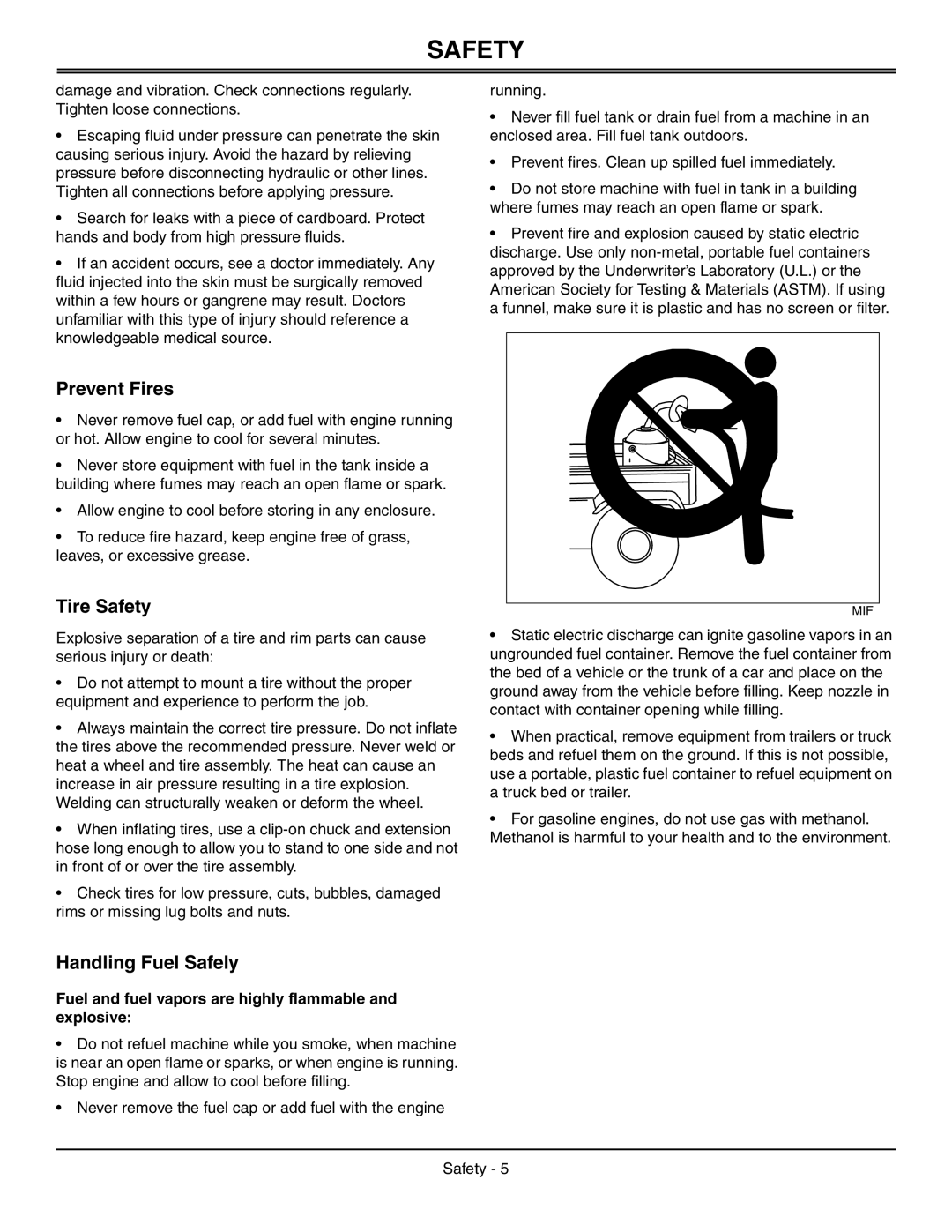
SAFETY
damage and vibration. Check connections regularly. Tighten loose connections.
•Escaping fluid under pressure can penetrate the skin causing serious injury. Avoid the hazard by relieving pressure before disconnecting hydraulic or other lines. Tighten all connections before applying pressure.
•Search for leaks with a piece of cardboard. Protect hands and body from high pressure fluids.
•If an accident occurs, see a doctor immediately. Any fluid injected into the skin must be surgically removed within a few hours or gangrene may result. Doctors unfamiliar with this type of injury should reference a knowledgeable medical source.
Prevent Fires
•Never remove fuel cap, or add fuel with engine running or hot. Allow engine to cool for several minutes.
•Never store equipment with fuel in the tank inside a building where fumes may reach an open flame or spark.
•Allow engine to cool before storing in any enclosure.
•To reduce fire hazard, keep engine free of grass, leaves, or excessive grease.
Tire Safety
Explosive separation of a tire and rim parts can cause serious injury or death:
•Do not attempt to mount a tire without the proper equipment and experience to perform the job.
•Always maintain the correct tire pressure. Do not inflate the tires above the recommended pressure. Never weld or heat a wheel and tire assembly. The heat can cause an increase in air pressure resulting in a tire explosion. Welding can structurally weaken or deform the wheel.
•When inflating tires, use a
•Check tires for low pressure, cuts, bubbles, damaged rims or missing lug bolts and nuts.
Handling Fuel Safely
Fuel and fuel vapors are highly flammable and explosive:
•Do not refuel machine while you smoke, when machine is near an open flame or sparks, or when engine is running. Stop engine and allow to cool before filling.
•Never remove the fuel cap or add fuel with the engine
running.
•Never fill fuel tank or drain fuel from a machine in an enclosed area. Fill fuel tank outdoors.
•Prevent fires. Clean up spilled fuel immediately.
•Do not store machine with fuel in tank in a building where fumes may reach an open flame or spark.
•Prevent fire and explosion caused by static electric discharge. Use only
MIF |
•Static electric discharge can ignite gasoline vapors in an ungrounded fuel container. Remove the fuel container from the bed of a vehicle or the trunk of a car and place on the ground away from the vehicle before filling. Keep nozzle in contact with container opening while filling.
•When practical, remove equipment from trailers or truck beds and refuel them on the ground. If this is not possible, use a portable, plastic fuel container to refuel equipment on a truck bed or trailer.
•For gasoline engines, do not use gas with methanol.
Methanol is harmful to your health and to the environment.
Safety - 5
